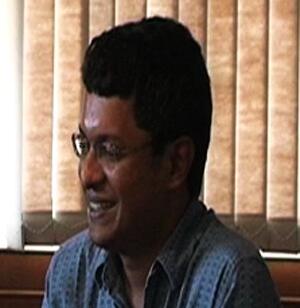Sunil Abraham: Online Life
22 November 2008, Bangalore: Some people one knows by circling around them and finding your self to be in the same environment again and again. This is how I have known Sunil Abraham for many years until one day in Delhi we ran into each other on a formal occasion and we ended up discussing our work of organizing events and feeling responsible for the well being of all who attend.
22 November 2008, Bangalore: Some people one knows by circling around them and finding your self to be in the same environment again and again. This is how I have known Sunil Abraham for many years until one day in Delhi we ran into each other on a formal occasion and we ended up discussing our work of organizing events and feeling responsible for the well being of all who attend.
This role of being the initiator, producer, orchestrator and director all at once is a highly complex one and the dilemma’s one faces can be confusing. Being the catalyst in social political events where many people have a lot at stake, demands a strong presence and conviction of one self but of course one has doubts and so it was great to have a chance to share some of our concerns.
Sunil has been a catalyst in social technological developments in Asia over the last decade. With good humour, a lot of friendliness and a sharp mind, he has been building bridges, switching structures and created several initiatives that last till today. Being both a techie as well as a social entrepreneur, he has easily shifted between these domains and many of us have benefitted from his capacities. We meet on a Saturday afternoon in his brand new office behind Wockhardt Hospital in Bangalore. We just arrived from Amsterdam and he is about to go off to the UK.
----------------------
Read the interview here

 Caroline Nevejan
Caroline Nevejan


 Sunil Abraham,
Sunil Abraham,